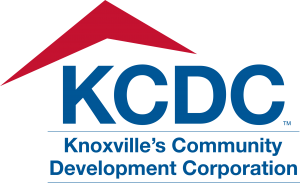This article originally appeared as a guest column by KCDC Executive Director and CEO Art Cate in the Knoxville News Sentinel on July 19, 2015.
Public housing in the United States is facing a monumental challenge to upgrade its aging housing stock in light of consistently decreasing federal funding options. Knoxville’s Community Development Corporation (KCDC) is at the forefront of a national issue with a local solution.
First, the background: Many of the more than 1.2 million units in public housing properties across the county were constructed in the 1950s and 1960s. The barracks-style housing was popular 60 years ago, but that layout isn’t conducive to building strong, stable neighborhoods, and the structures now are outdated and often dilapidated beyond repair. Public housing has a national backlog of more than $25.6 billion in needed capital improvements.
Add to this issue the ongoing uncertainty of federal funding, and the mandate placed on public housing agencies to improve and increase affordable housing options, and the challenge becomes even more difficult. Housing agencies at the local level, such as KCDC, must find creative new financing strategies to achieve the mission of transforming our neighborhoods.
Now, the good news: The U.S. Department of Housing and Urban Development (HUD) has provided housing agencies with a crucial new tool called the Rental Assistance Demonstration (RAD) program. RAD will allow agencies to continue their housing mission without depending on federal funds that may never come.
KCDC was an early adopter of RAD, which was developed in 2012. The program allows KCDC to convert public housing units to project based rental assistance (PBRA) property subsidized by funds from HUD’s multifamily Section 8 department.
Converting to the project-based rental assistance program means KCDC has the same options available to the private sector. RAD allows public housing agencies to leverage public and private debt and equity in order to reinvest in the public housing stock. The use of private sector tools is critical to KCDC’s strategy to upgrade and replace aging housing developments across Knoxville and Knox County.
The RAD program is a critical strategy for our ongoing Five Points revitalization project and is a perfect example of why RAD is so valuable. Walter P. Taylor Homes and the Dr. Lee Williams Senior Complex were built in the 1960s and are outdated without modern amenities. The area needs the development to be improved in order to thrive as a neighborhood, but finding the funding resources is a challenge.
Federal funds for local agencies are declining every year since 2002, and large multimillion-dollar grants like HOPE VI in the 1990s are a thing of the past. Comprehensive community revitalization projects now occur in slower, phased approaches with multiple funding sources.
The multi-phase, multi-year Five Points revitalization project began four years ago. KCDC has invested more than $21 million in new housing through federal funding sources and tax credits with a total redevelopment project cost of $85 million. The project will replace 500 existing public housing units in the area.
Earlier this year, KCDC’s application was approved for Walter P. Taylor Homes and the Dr. Lee Williams Senior Complex. The first phase of the application is a plan to convert 90 units under the RAD program, enabling us to begin the first phase of the Master Plan for redevelopment in Five Points. KCDC will break ground on the $9.8 million senior and disabled housing development in Five Points in early 2016 through a combination of the sale of low-income housing tax credits and private financing made possible through RAD. Gap financing will be provided as necessary with funding provided by the Federal Home Loan Bank Affordable Housing Program, KCDC and the City of Knoxville.
An application for two additional KCDC properties in Knox County, Autumn Landing and Nature’s Cove, was also approved. This will allow us to continue to make significant property improvements to the 197 apartments at these sites.
Our long range plan is to convert a majority of our housing stock to multifamily Section 8 housing through RAD, which will allow flexibility of funding sources for improvements, as well as greater stability through decreased dependency on Congress to approve federal funds. In 2013, applications for only 60,000 units nationwide were approved by Congress for RAD conversion. In 2014, Congress approved an additional 125,000 units to be allowed under this demonstration. The KCDC Board in May approved staff to apply to transition an additional 821 of our more than 3,500 units to the Project Based Rental Assistance program.
Section 8 PBRA units remain permanently affordable to low-income households, because these contracts mandate a twenty year term that, by law, must be renewed for an additional 20 years. KCDC residents in these units will continue to pay 30 percent of their adjusted gross income toward rent and utilities. Utility costs also will decrease as upgrades make units more energy-efficient.
KCDC now has a long-term, sustainable way through the RAD program to transform, improve and expand affordable housing without relying on the fluidity of federal funding. Using private sector tools and partnerships to fund public housing and redevelopment projects will keep our city moving forward and allow our neighborhoods to flourish.
This is the future of public housing in Knoxville, Knox County and across the country.

